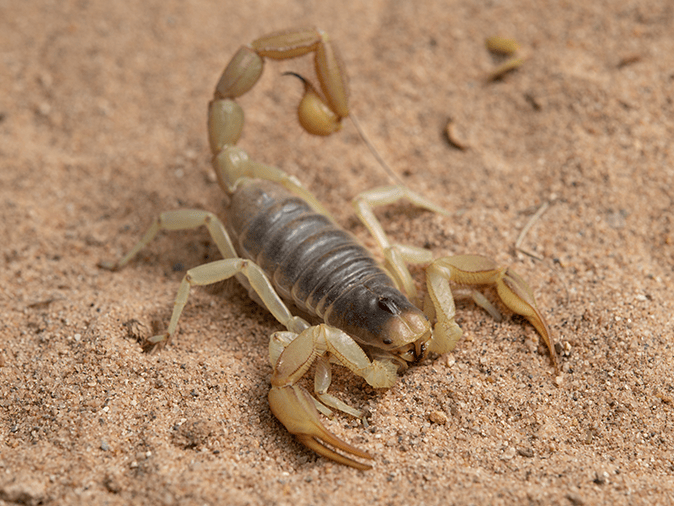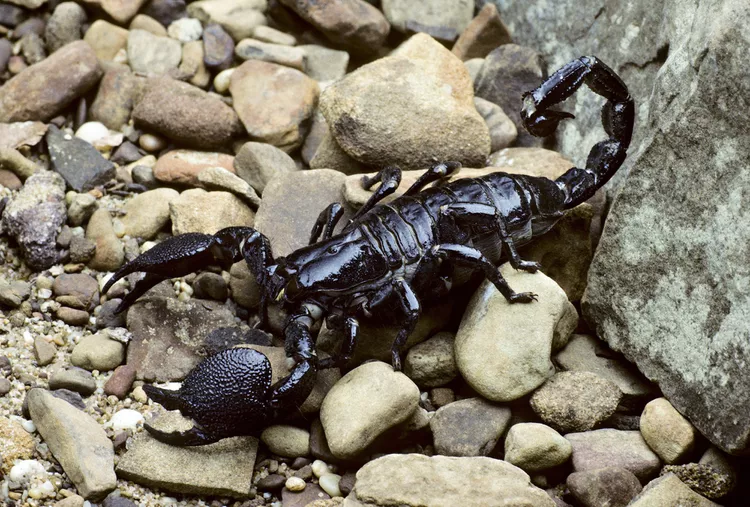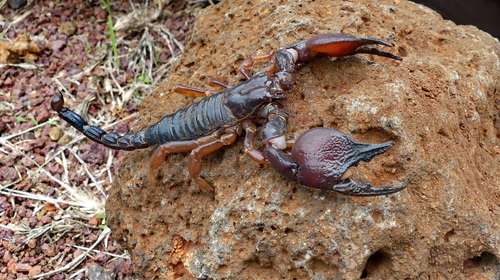
Description
Scientific Name: Hadrurus arizonensis
The largest scorpion in North America is this one. Their backs will be a darker tint than their bodies, which may be brown or olive green in colour. They have brown hairs that may or may not be claws, legs, or tails that are yellow. They receive their name from the tiny, brown, erect hairs on the tips of their tails.
Habitat
In the southwest of North America (Arizona, Nevada, California, and Utah), as well as Mexico, this species of scorpion is widely dispersed. The majority of the Desert Hairy Scorpions’ burrows are deep, intricate tunnels that they themselves dig, however they can also be found under rocks, dead trees, etc.
Behavior
The Desert Hairy Scorpion spends the most of the day in hiding in burrows or other protected spaces to avoid predators and the heat of the sun in the wild. Like several other species, these scorpions are solitary and do not form dense colonies or huge groups.
These scorpions do not hunt frequently. They are ambush predators and wait for their prey to get close enough to them before striking. Although Hadrurus arizonensis has a high degree of adaptability and can live in a range of settings, it does prefer to dwell in a burrow. If sufficient natural burrows are not available, they usually dig their own.
As Pet

Enclosure:
If housed separately, as is strongly advised with this species, you should allow them at least 5 to 10 gallons of room each.
Cleaning:
You must first remove your pet in order to more easily access the enclosure of your scorpion so that it may be cleaned. Following their removal, you should empty their tank and clean it with a disinfectant safe for scorpions. To ensure they have a brand-new, clean environment, you should also change their substrate. Every three to four months, you should thoroughly clean out their tank in this manner.
Temperature:
Temperatures between 60 and 80 degrees Fahrenheit are necessary for Desert Hairy Scorpions, which can be maintained by placing a heating pad beneath their tank or using a heat lamp.
Humidity:
These scorpions are more susceptible to fungus infections because they are accustomed to more arid environments, making them more sensitive to dampness. You should always keep their humidity levels at about 55%. In order to prevent too much moisture from building up, you should also think about providing ample ventilation for their enclosure. This particular species of scorpion won’t require misting like some other species could.
Feeding:
In captivity, these scorpions prefer eating crickets, locusts, cockroaches, spiders, and small animals. Before offering the prey to your pet, be sure to gut-load and calcium-dust them. Once or twice a week, you should give your pet a huge, smaller-than-it insect to eat.
Table





